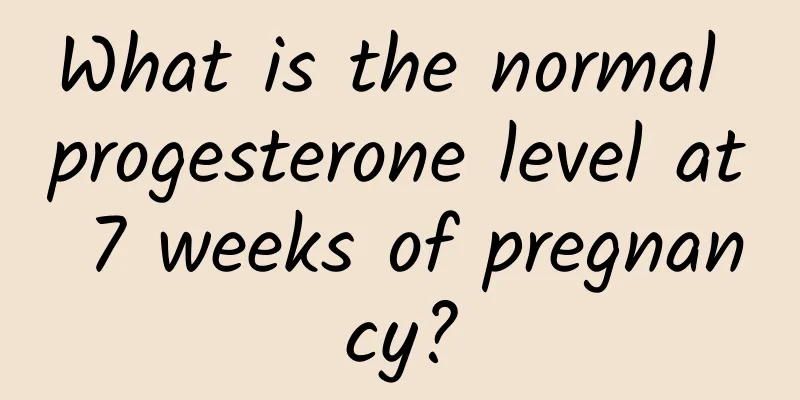Can high prolactin cause cervical adhesions?

|
High prolactin levels will not directly cause cervical adhesions, but may indirectly cause related gynecological problems by affecting hormone levels. Elevated prolactin levels may be related to pituitary tumors, drug side effects, or hypothyroidism, while cervical adhesions are usually caused by surgery, infection, or inflammation. For high prolactin levels and cervical adhesions, it is necessary to start with hormone regulation and gynecological treatment, respectively. 1. Causes and treatment of high prolactin Elevated prolactin is often caused by a pituitary tumor, medication use such as antidepressants or antihypertensive drugs, or hypothyroidism. Pituitary tumors may cause excessive prolactin secretion, and medication side effects may also interfere with hormone balance. Hypothyroidism can indirectly cause elevated prolactin by affecting the hypothalamic-pituitary axis. In terms of treatment, pituitary tumors can be controlled by drugs such as bromocriptine, cabergoline or surgical resection. Drug-induced increases in prolactin require adjustment of the medication regimen, and hypothyroidism requires thyroid hormone supplementation. Regular monitoring of prolactin levels and related hormone indicators is key. 2. Causes and treatment of cervical adhesions Cervical adhesions are often caused by intrauterine surgery such as curettage, abortion, infection such as cervicitis or inflammation. Surgical trauma may cause damage to cervical tissue, while infection and inflammation may cause fibrosis and eventually adhesion. Treatment of cervical adhesions usually involves hysteroscopic surgery to separate the adhesions, followed by placement of an intrauterine device or the use of hormonal drugs such as estrogen to promote endometrial repair. Preventing infection and regular gynecological examinations can help reduce the risk of adhesions. 3. The relationship between high prolactin and cervical adhesion Although high prolactin levels do not directly cause cervical adhesions, hormone imbalances may affect the menstrual cycle and the health of the endometrium, indirectly increasing the risk of gynecological problems. For example, high prolactin levels may cause irregular menstruation or amenorrhea, which in turn affects the normal function of the cervix and endometrium. For patients with high prolactin, regular gynecological health checks are recommended, especially for those with abnormal menstruation or fertility difficulties. At the same time, the treatment of cervical adhesions needs to be combined with individual conditions, taking into account hormone levels and gynecological health. High prolactin and cervical adhesions are two different health problems that need to be treated with hormone regulation and gynecological treatment respectively. The treatment of high prolactin focuses on controlling hormone levels, while cervical adhesions need to be repaired through surgery and medication. For people at risk of high prolactin or cervical adhesions, regular checkups and early intervention are the key to preventing and improving the problem. |
<<: What are the treatments for central amenorrhea?
>>: What are the early symptoms of cervicitis
Recommend
What should I pay attention to during curettage surgery for endometrial thickening?
What should be paid attention to during the curet...
How to choose a hospital for uterine fibroids
How to choose a hospital for uterine fibroids? Ut...
168 Fasting, Ketogenic Diet, Reduced Sugar Diet, which one is better for weight loss? Beauty nutritionist cracked
The problem that everyone will definitely face in...
Why does endometrial thickening recur?
Why does endometrial thickening recur? For many w...
What are the causes of cervicitis?
Modern living habits have changed a lot, and our ...
Vulva sometimes itches and leucorrhea is abnormal
Vulvar itching with abnormal leucorrhea may be ca...
Brown fat can help you lose weight. Eating apples and strawberries is effective
After entering middle age, many women can’t help ...
What to eat in winter is easy to get uterine fibroids. What to eat in winter is good for the uterus.
What to eat in winter is easy to get uterine fibr...
It is important to take good care of ovarian cysts in life
Because the care of ovarian cysts is also to bett...
What symptoms do patients with pelvic inflammatory disease experience?
In medicine, pelvic inflammatory disease can be d...
Causes of threatened miscarriage in early pregnancy
Causes of threatened miscarriage in early pregnan...
Why do I have irregular menstruation? 7 reasons for irregular menstruation during menopause
1. First, it should be confirmed whether it is am...
What is the process of superconducting abortion? Superconducting abortion can cause 6 complications
I believe that women of childbearing age are no s...
Some women have no hair in their private parts. Is this normal? Doctors give these suggestions!
Recently, I met a very shy lady. She secretly ask...
What to do about irregular menstruation? 5 effective ways to regulate menstruation
Women with irregular menstruation will have bad s...









